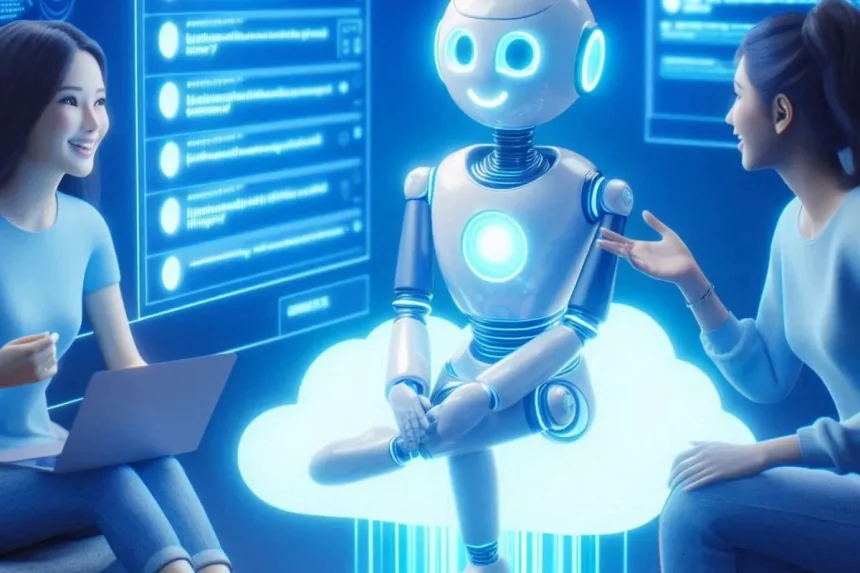In an era where technology increasingly shapes our interactions, ChatGPT stands out as a transformative force in the realm of artificial intelligence. Developed by OpenAI, ChatGPT represents a significant leap forward in natural language processing, bringing sophisticated conversational capabilities to a wide range of applications. This article delves into the impact of ChatGPT, exploring its underlying technology, practical uses, and the broader implications for communication and AI.
Understanding ChatGPT: The Technology Behind the Conversations
At its core, ChatGPT is built on the GPT (Generative Pre-trained Transformer) architecture, a deep learning model that excels in understanding and generating human-like text. The “transformer” in its name refers to a specific type of neural network architecture that has revolutionized natural language processing by enabling models to focus on different parts of the input text with varying degrees of attention.
Pre-training and Fine-Tuning: ChatGPT’s capabilities are rooted in a two-step process: pre-training and fine-tuning. During pre-training, the model is exposed to vast amounts of text data from the internet, learning to predict the next word in a sentence and thereby developing a nuanced understanding of language. In the fine-tuning phase, the model is further trained on a narrower dataset with human reviewers providing feedback, which helps refine its responses to be more relevant and coherent.
Contextual Understanding: One of the key strengths of ChatGPT is its ability to maintain context over extended conversations. Unlike earlier models that struggled with context retention, ChatGPT can understand and respond to queries with a coherent grasp of the ongoing dialogue, making interactions feel more natural and engaging.
Applications: Transforming Communication Across Sectors
The versatility of ChatGPT extends across various domains, showcasing its potential to enhance communication and efficiency in numerous fields:
Customer Support: Businesses are leveraging ChatGPT to provide instant, accurate responses to customer inquiries. The model’s ability to handle complex queries and provide relevant information improves customer satisfaction and reduces the workload on human support agents.
Education: In the educational sector, ChatGPT serves as a valuable tool for tutoring and providing explanations on a wide range of subjects. Students can engage in interactive learning, asking questions and receiving detailed explanations that can aid their understanding of complex topics.
Content Creation: Writers and content creators use ChatGPT to brainstorm ideas, generate drafts, and refine their work. The model’s ability to produce coherent and contextually relevant text makes it a useful companion for overcoming writer’s block and enhancing productivity.
Personal Assistance: ChatGPT is also integrated into personal assistant applications, helping users with tasks such as scheduling, reminders, and general information retrieval. Its conversational abilities make it a more intuitive and user-friendly alternative to traditional digital assistants.
Ethical Considerations and Challenges
Despite its advancements, ChatGPT faces several ethical and practical challenges that warrant consideration:
Bias and Fairness: The model’s responses are shaped by the data it was trained on, which can include biases present in the source material. Efforts are ongoing to mitigate these biases and ensure that the AI provides fair and balanced responses.
Misuse Potential: The capability of ChatGPT to generate persuasive and coherent text raises concerns about potential misuse, such as generating misleading information or impersonating individuals. Addressing these risks requires robust safeguards and ethical guidelines.
Privacy: Ensuring user privacy is paramount, especially as ChatGPT processes sensitive information. Clear policies and practices are necessary to protect user data and maintain trust.
Conclusion
ChatGPT is a groundbreaking development in artificial intelligence, redefining how we interact with technology through its advanced conversational capabilities. By leveraging the power of the GPT architecture, ChatGPT has demonstrated remarkable proficiency in understanding and generating human-like text, revolutionizing sectors from customer support to education and content creation.
However, with its transformative potential comes a responsibility to address the ethical challenges and risks associated with AI. Ensuring fairness, preventing misuse, and safeguarding privacy are crucial as we continue to integrate ChatGPT into various applications.
Looking ahead, ChatGPT represents not only a technological milestone but also a glimpse into the future of human-AI interactions. As ongoing research and development push the boundaries of what is possible, ChatGPT’s impact on communication and technology will likely continue to grow, shaping the way we connect with machines and each other. The journey of ChatGPT underscores the profound possibilities of AI while highlighting the need for thoughtful consideration as we navigate this new frontier.
Get more info: https://www.timelinetale.com/


